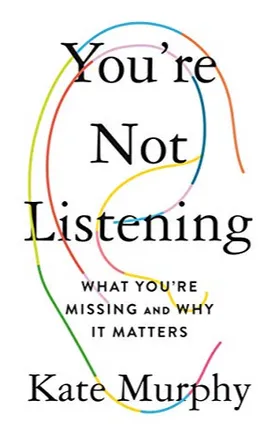You're Not Listening: What You're Missing and Why It Matters by Kate Murphy
It doesn’t matter if you’re talking or listening, good communication is essential to any successful conversation. But as Kate Murphy points out in her book “You’re Not Listening: What You're Missing and Why It Matters,” communication is a two-way street. We may think we’re engaging in a meaningful exchange, when in fact we’re just hearing ourselves talk, while the other person is lost in thought.
Murphy cites studies that prove humans can process only half of what they’re hearing. We process up to 70 percent of written words, but only about 25 percent of spoken words. This partial understanding of each other’s stories can lead to a dangerous cycle of miscommunication, frustration and misunderstanding.
In “You’re Not Listening,” Murphy asks us to become better listeners. Being present in the conversation, looking for insights and listening with intent can help foster stronger relationships and deeper understanding with the people in our lives.
Murphy walks us through the three Rs of successful listening: relation, reception and response. Drawing from experts in psychology, mindfulness, coaching and more, Murphy explains how active listening helps us to suppress distractions and hear the nuance of another’s story.
Murphy also examines how technology is killing our conversations. Devices, gadgets and multitasking have fragmented our attention, reducing our ability to think things through and absorb nuances in conversations. She provides tools to help us be more conscious of our digital use and make time for face-to-face dialogue.
Murphy closes the book by providing thought-provoking questions to help us think more deeply, become more mindful and find clarity. Being fully present in a conversation allows us to appreciate the art of communication, build relationships and, ultimately, better understand ourselves and the world around us.
In her book “You’re Not Listening,” Kate Murphy reminds us that conversations are only as successful as the listeners involved. We must pay attention, listen with intent and be present in the conversation. Only then can we truly appreciate the art of communication, make meaningful connections and find clarity.

